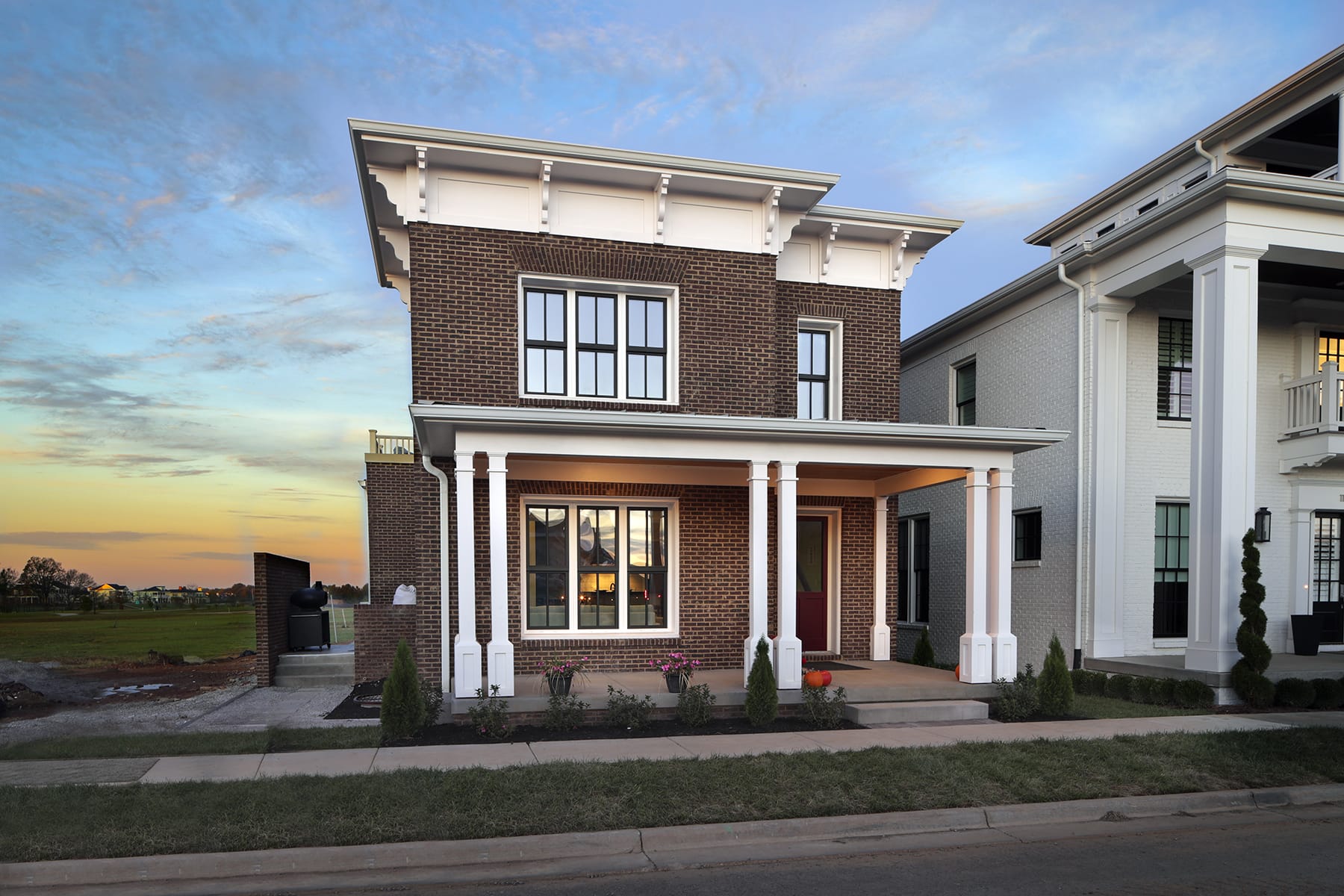Pity the poor granite countertop makers, the straw man in every green building argument. Builders love to say that home buyers won’t give up granite countertops to invest in extra insulation, high-efficiency HVAC or hot water recirculation pumps. But some leading builders are figuring out how to make the sale on high-performance homes that don’t cost more than their code-built neighbors.
These smart builders are reimagining their homes to be designed and built in a way that allows them to offer high performance without additional purchase cost. These homes include a bundle of highly desired benefits, such as lower energy and water costs, greater comfort, healthier indoor air quality, building resource efficiency and lower maintenance.
Still, one very powerful myth — green homes cost more — is keeping more builders from fully embracing the trend. At one time, that was true, but no longer.

Photography by James Moses
“Nothing will be more exciting and drive more success in the home building marketplace than high-performance homes being available for no more cost than a non-high performance home,” says Robert Fincher, publisher of ProudGreenHome.com, a website devoted to inspiring and educating home owners and building professionals on high-performance homes.
In the best practices document, “High Performance Homes — No More Cost,” ProudGreenHome.com talked with a number of leading builders and industry experts to understand the obstacles to building green at competitive prices. The consensus among the experts, including award-winning and commercially successful home builders, is to understand and adopt the smart choices in the construction process that can lead to a competitive — if not superior — total cost of ownership. For example, advanced framing techniques or factory-built trusses and wall panels not only produce a tighter building envelope, but also save money on lumber and labor costs and reduce onsite waste.
Fortunately, the value of green homes is beginning to rise in the marketplace. The ninth annual Energy Pulse study, a national survey from the Shelton Group, found that 81 percent of those surveyed said energy efficiency would have “somewhat to very much” impact on their selection when comparing two homes.
Sure, some features of a high-performance home may increase total cost, the same way a custom-built contemporary home with lots of upgrades will cost more. But a truly high-performance home that delivers many benefits to the homeowner does not have to cost more; smart choices in the construction process can hold the purchase price to a competitive level with a code-built home of similar size in the same market.
A greater investment in insulation, air sealing and high-performance windows means the HVAC system can be smaller, leading to savings in the purchase price, as well as the ongoing operation of the house. Reducing the electrical load through a tight thermal envelope, using ENERGY STAR-certified appliances, LED lighting and other measures can cut the amount of solar power required to be a net zero home — or get close to it.

Green builders understand the fact — and communicate it well to their buyers — that energy efficiency is a way to get those granite countertops and other amenities in a high- performance home where energy savings deliver a lower total cost of ownership. A builder can give a home buyer a HERS report that shows energy costs will be $300 a month less — and the buyer can finance almost $100,000 more — for the same monthly outlay of principal, interest, taxes, insurance and energy on a code-built house.
With a clear explanation, home buyers can understand the math that makes green homes a better value. For example, in the Denver market, a green home builder estimates that taking a 2,000-square-foot house from code to a Department of Energy Zero Energy Ready Home adds about $10,000 to the market value of about $400,000. To achieve full net zero with solar panels adds approximately $35,000 to the sales price.
The builder shows buyers that the net zero energy house will save about $300 per month in energy bills, compared to a typical resale house. The cost of the additional $35,000 for renewables is about $100 per month in the mortgage payment. The math gets to be simple. For an investment of $100 a month to go full net zero, the home owner saves $300 a month in utility costs, starting on move-in day and lasting the life of the home.
In Florida, the developer of a neighborhood of 148 net-zero homes estimates that lower energy bills give the home owners more than $40,000 in additional buying power over the life of the mortgage, plus a healthier, more comfortable home.
These home builders don’t necessarily sell a “green” home, they sell a high-quality, high-performance product — and the green aspects of resource efficiency are a welcome outcome.
Builders don’t have to be frustrated by the thought that customers will choose granite countertops over energy efficiency. Instead, builders can give buyers the granite countertops and build a better home. While green home elements may add slightly to the initial cost, they can be offset quickly by the savings from enhanced energy efficiency throughout the life of the home.
The original article, written by Gary Wollenhaupt, was published in the winter 2017 issue of Best in American Living.

